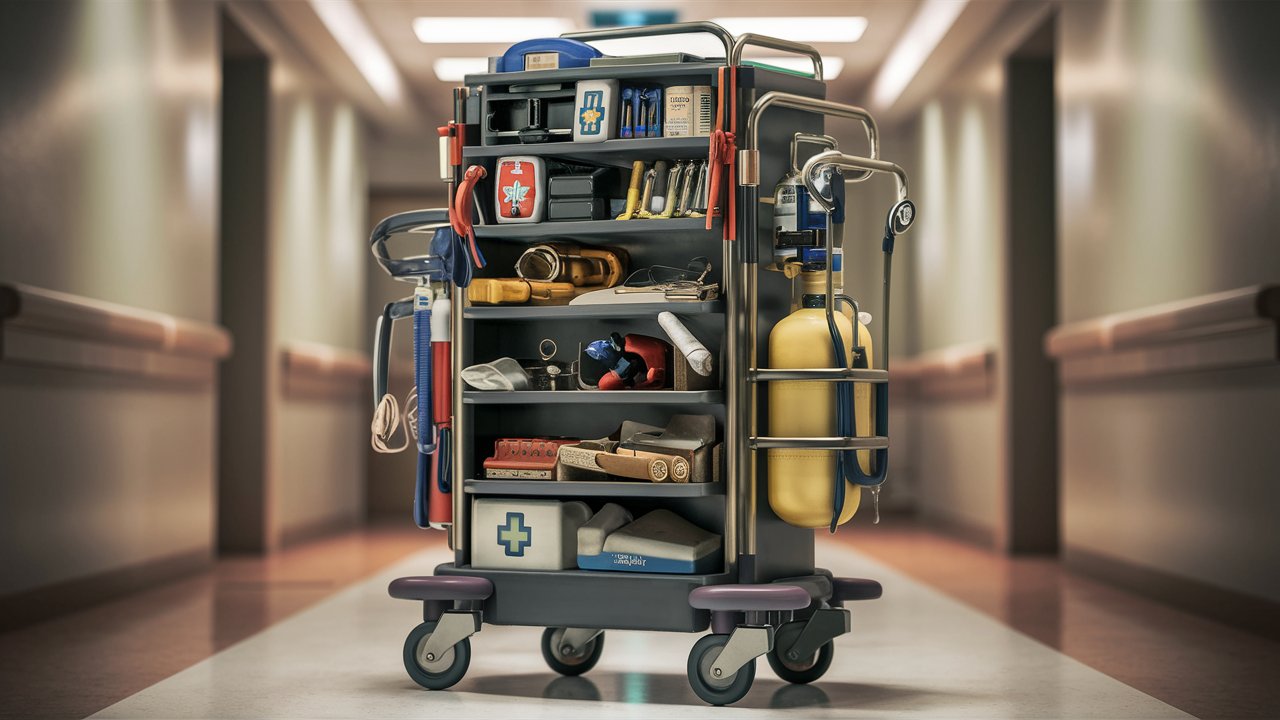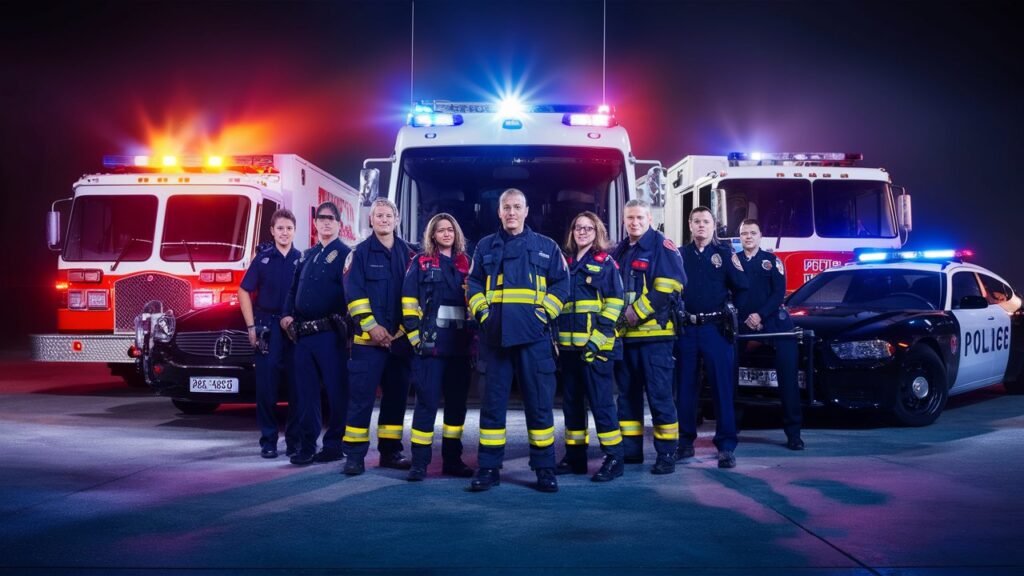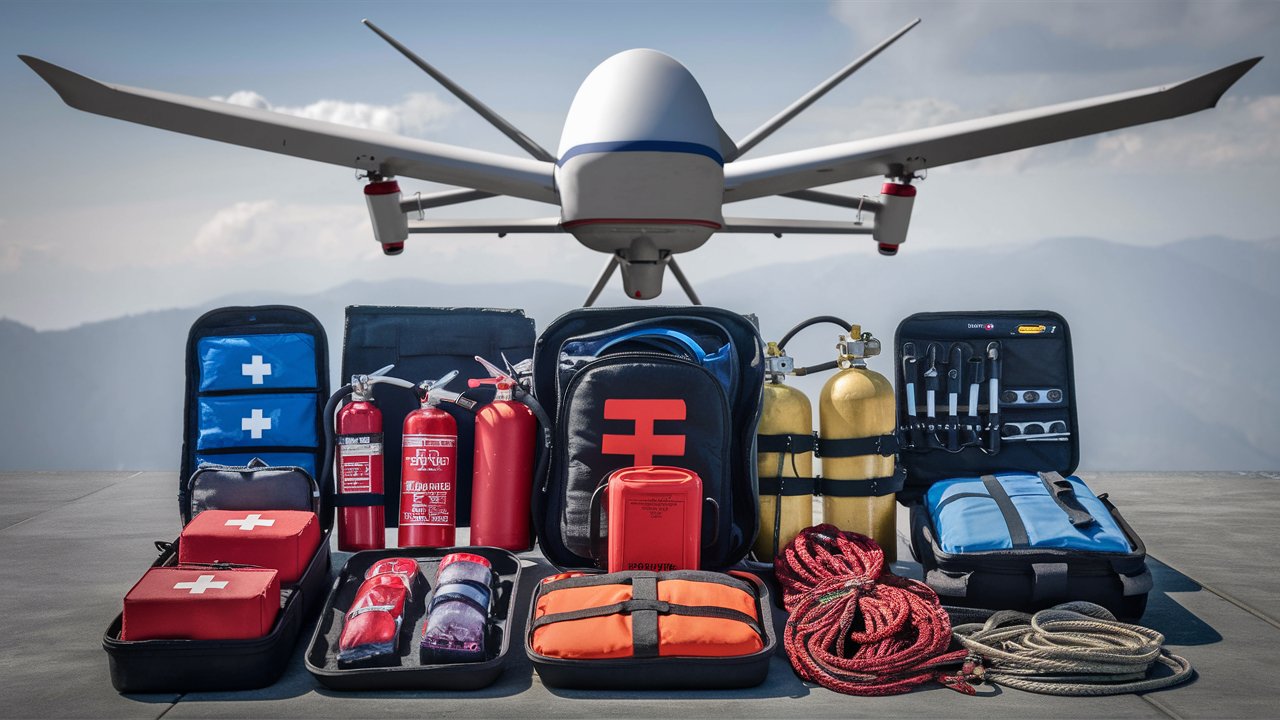In any workplace, safety is paramount. Whether it’s a bustling construction site, a busy hospital ward, or a manufacturing plant, having the right emergency equipment readily available can mean the difference between life and death. This comprehensive guide explores the importance of emergency equipment trolleys, their components, and how they contribute to a safer work environment.

Emergency Equipment Trolley: A Lifesaving Asset
Emergency equipment trolleys, also known as crash carts or code carts, are mobile units stocked with essential medical or safety supplies. These trolleys are strategically placed throughout various workplaces to ensure rapid access during emergencies. They serve as a centralized resource, equipped to handle a wide range of critical situations.
Key Components of an Emergency Equipment Trolley
- Defibrillator: A crucial component for cardiac emergencies, capable of delivering life-saving shocks to restore normal heart rhythms.
- Oxygen Tank: Provides supplemental oxygen for patients experiencing respiratory distress or cardiac arrest.
- First Aid Supplies: Including bandages, gauze, antiseptic solutions, and other items for immediate wound care.
- Medications: Essential drugs such as epinephrine, aspirin, and naloxone for managing various medical emergencies.
- Airway Management Devices: Tools like endotracheal tubes, airway adjuncts, and suction devices for maintaining clear airways.
- Emergency Drugs: Rapid-acting medications for treating conditions like allergic reactions, seizures, or cardiac arrhythmias.

The Role of Emergency Equipment Trolleys in Workplace Safety
Emergency equipment trolleys play a crucial role in enhancing workplace safety by providing swift access to life-saving resources. In medical settings, such as hospitals and clinics, these trolleys are often stationed in high-traffic areas like emergency departments, intensive care units, and operating rooms.
In industrial environments, where accidents and injuries are more common, specially equipped trolleys are deployed to promptly address workplace injuries, chemical spills, or fire incidents. Having these resources readily available can minimize response times and mitigate the severity of injuries.
Best Practices for Emergency Equipment Management
To ensure the effectiveness of emergency equipment trolleys, organizations should implement the following best practices:
- Regular Inspections: Conduct routine inspections to verify that trolleys are properly stocked, equipment is in working order, and expiration dates on medications are monitored.
- Training and Drills: Provide comprehensive training to staff members on the use of emergency equipment and conduct regular drills to simulate emergency scenarios.
- Documentation: Maintain detailed records of trolley inspections, restocking procedures, and staff training to ensure compliance with regulatory standards.
- Accessibility: Position trolleys in easily accessible locations with clear signage to facilitate rapid deployment during emergencies.
Frequently Asked Questions (FAQs)
1. What should be included in an emergency equipment trolley?
- An emergency equipment trolley should include essential items such as a defibrillator, oxygen tank, first aid supplies, medications, airway management devices, and emergency drugs.
2. How often should emergency equipment trolleys be inspected?
- Emergency equipment trolleys should be inspected regularly, ideally on a daily basis, to ensure that all components are present, functional, and within expiration dates.
3. Who is responsible for restocking emergency equipment trolleys?
- It is typically the responsibility of designated personnel, such as nurses, paramedics, or safety officers, to regularly restock emergency equipment trolleys as needed.
4. Can emergency equipment trolleys be customized for specific workplace needs?
- Yes, emergency equipment trolleys can be customized to meet the specific requirements of different workplaces, industries, or types of emergencies.
5. How should expired medications be handled in emergency equipment trolleys?
- Expired medications should be promptly removed from the trolley and replaced with fresh supplies to ensure efficacy and safety during emergencies.
6. Are there regulatory standards governing the management of emergency equipment trolleys?
- Yes, regulatory agencies such as OSHA (Occupational Safety and Health Administration) may have guidelines or requirements regarding the management, maintenance, and accessibility of emergency equipment trolleys in certain industries.
Conclusion
In conclusion, emergency equipment trolleys are indispensable assets for maintaining workplace safety and preparedness. By ensuring that these trolleys are well-stocked, properly maintained, and easily accessible, organizations can significantly improve their response capabilities during emergencies. Investing in comprehensive emergency preparedness measures, including the deployment of emergency equipment trolleys, demonstrates a commitment to employee safety and well-being.




